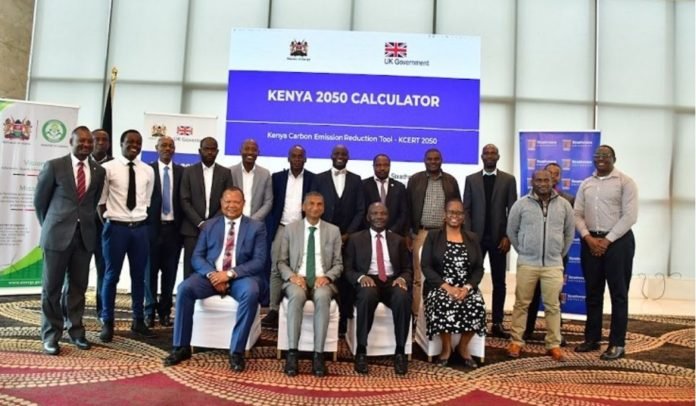The government of Kenya, the British High Commission Nairobi, and Strathmore University have jointly launched the Kenya Carbon Emission Reduction Tool (KCERT 2050), a bespoke energy and emissions model to assist Kenya in achieving its climate goals.
The equipment was delivered under the UK Government’s international 2050 Calculator programme, which is funded by the UK’s International Climate Finance, and led by global engineering, management and development consultancy Mott MacDonald, and a consortium which includes Imperial College London, Climact and Ricardo.
KCERT 2050 is an interactive energy model that allows users to trial options for reducing climate change-inducing carbon emissions at a faster rate and to build a pathway that meets long-term emission targets to 2050 and beyond. It can be used to support policy-making to allow governments to increase national action on climate change and strengthen ambition in line with the 2015 Paris Agreement.
READ;AWDP; Uganda, Kenya water project set to commence
Future energy system
KCERT 2050 will play a key role in helping policy-makers, energy producers and consumers, including the public, in Kenya to understand the energy and emissions related choices they are making. It also provides a platform for engaging in dialogues on the challenges and opportunities of the future energy system and the responses to climate change. The project gives Kenya the opportunity to pioneer climate mitigation approaches across the East African region.
“As part of strengthening our UK-Kenya Strategic Partnership on climate action, the British High Commission welcomes the launch of the Kenya Carbon Emissions Reduction Tool 2050. This tool, which is a first in East Africa, will support government departments in Kenya to design and deliver evidence based, inclusive policies on emissions reductions, energy access, and matching energy supply and demand.
I look forward to Kenya acting as a pioneer in championing the use of this innovative tool that will provide options for implementing Kenya’s emission reduction strategies and achieving net-zero development pathways by 2050,” said H.E Jane Marriott British High Commissioner to Kenya.
In his remarks, the Principal Secretary Ministry of Energy, Maj. Gen (Rtd). Dr. Gordon Kihalangwa noted; Energy is about security, about development, but if we use it badly it will affect us negatively. Kenya has complied with the Paris Agreement by submitting a revised NDC. A country like this is privileged to use renewables, and the tool will help us work out how we will get to net-zero by 2050. This KCERT 2050 will be used to support the reduction of emissions and create resilience to climate change in the energy sector in Kenya
Dr John Olukuru, Head of Data Science and Analytics at Strathmore University and Lead KCERT Modeller said: The Kenya Carbon Emission Reduction Tool (KCERT) 2050 is an important data driven policy making tool in climate change.
It will help every Kenyan, expert or non-expert, to engage in a well-informed climate change debate. The calculator considers all sectors, stakeholders’ input and various scenarios that provide enormous volume of data and hence sets a foundation to applying AI and machine learning to monitor and decrease carbon emissions, streamline operations to empower every policy maker to recognize that climate action provides an opportunity to create value by tapping into new markets and meeting growing demand for low-carbon plus greener services.





